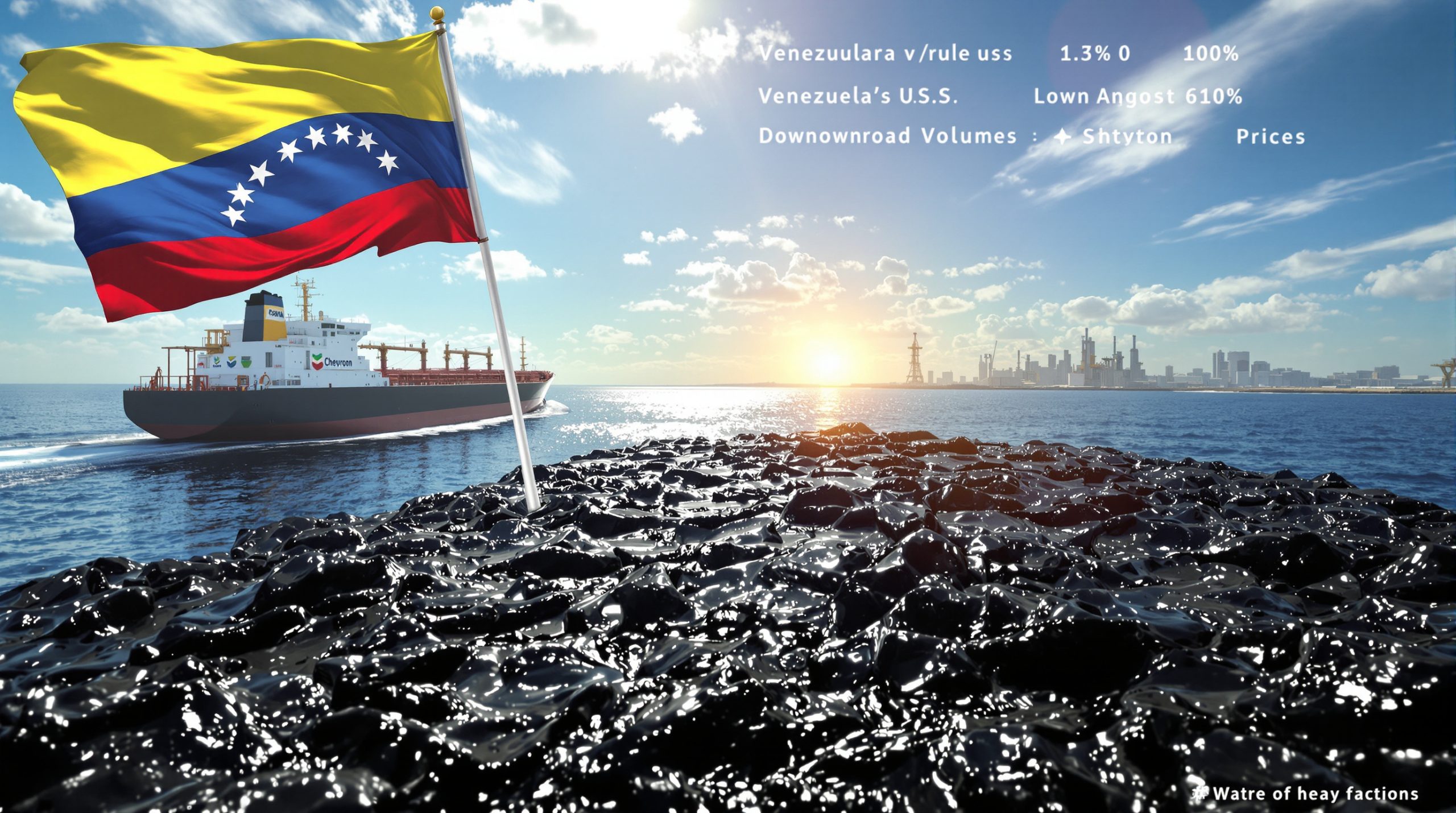China's Construction Pause Sends Iron Ore Prices Tumbling Amid Military Parade Preparations
Iron ore prices have entered a significant downtrend as China implements widespread construction suspensions ahead of a major military parade. This market disruption comes amid broader economic concerns in the world's largest steel producer, creating a perfect storm for commodity traders and mining companies worldwide.
Recent Iron Ore Price Movements Show Concerning Trend
Iron ore futures have experienced substantial declines in recent trading sessions, with January contracts on China's Dalian Commodity Exchange (DCE) falling 2.94% to 775 yuan ($108.06) per metric ton. Similarly, the Singapore Exchange benchmark September iron ore dropped 1.36% to $102.1 per ton as of 0730 GMT.
The current pricing represents a seven-week low for the crucial steelmaking ingredient, reflecting growing pessimism among traders about near-term demand prospects. This decline follows several months of relative price stability, highlighting how quickly sentiment can shift in commodity markets when policy changes occur in China.
Market volatility has intensified as traders attempt to price in both the temporary construction suspension and broader economic concerns. Technical analysts note that the price has broken below several key support levels, suggesting further downside may be possible unless new positive catalysts emerge.
What Triggered the Latest Price Slide?
The primary catalyst behind the recent iron ore price slides as China suspends construction ahead of military parade stems from China's decision to temporarily halt construction activities across multiple regions ahead of a significant military event.
Military Parade Preparations Impact Construction Activity
Chinese authorities have ordered the suspension of construction activity in at least 12 provinces before and during the September 3rd military parade commemorating the end of World War Two. This sweeping measure aims to reduce air pollution and ensure clear skies during the high-profile event.
"Chinese authorities have ordered the suspension of construction activity in at least 12 provinces before and around the event. As a result, it's not surprising to see Shanghai rebar and iron ore futures experiencing significant sell-offs," explained Atilla Widnell, managing director at Navigate Commodities in Singapore.
The timeline for these restrictions typically extends from approximately two weeks before the event until several days after its conclusion. Previous military parades have followed similar patterns, with construction activities gradually resuming in the weeks following the ceremony.
Weather Disruptions Compound Market Challenges
Beyond the parade-related suspensions, recent adverse weather conditions have further disrupted construction activities across several Chinese provinces. Seasonal flooding and typhoon activity have delayed projects, creating additional uncertainty around near-term steel demand.
Despite these challenges, industry consultancy Mysteel notes that "China's demand for construction steel is expected to remain stable in August, supported by the launch of new projects," suggesting that not all market fundamentals are negative.
How Are China's Economic Indicators Influencing Iron Ore Markets?
While the military parade preparations represent an immediate catalyst, longer-term concerns about China's economic health continue to weigh on commodity markets.
Credit and Lending Environment Shows Troubling Signs
July marked a concerning milestone for China's economy, as new yuan loans contracted for the first time in nearly two decades—specifically since July 2005. This represents the largest monthly decline in lending since December 1999, raising significant concerns about underlying economic momentum.
This contraction in lending signals weak private sector demand amid ongoing US‑China trade impact negotiations with Washington. For the construction sector, reduced lending typically translates to fewer new projects and diminished steel requirements—directly impacting iron ore demand.
Despite these concerns, there have been improvements in broader credit growth metrics, suggesting that China's central bank is not rushing to implement additional monetary easing measures. This measured approach indicates policymakers may believe the current slowdown is manageable without major intervention.
Steel Industry Adapts to Changing Market Conditions
Chinese steel mills have begun adjusting production volumes in response to weaker demand signals and narrowing profit margins. Many facilities have implemented maintenance schedules to coincide with the construction suspension period, temporarily reducing their iron ore requirements.
Industry analysts suggest that steel inventories remain within seasonal norms at most major trading hubs, indicating that panic selling has not yet materialized. However, continued weak demand could lead to inventory buildups and further pressure on prices in the coming weeks.
The relationship between iron ore price trends and finished steel products has become increasingly volatile, with Shanghai rebar futures also experiencing significant sell-offs alongside iron ore. This parallel movement suggests traders see the current challenges affecting the entire steel value chain rather than just raw material inputs.
What's Happening with Other Steelmaking Ingredients?
The market disruption extends beyond iron ore to other critical steelmaking inputs, creating a comprehensive downturn across the industry's supply chain.
Coking Coal Market Conditions Deteriorate
Coking coal futures have experienced even steeper declines than iron ore, falling 6.25% on the Dalian Commodity Exchange in recent trading. This substantial drop reflects diminished near-term demand expectations from steel producers and possibly indicates a more prolonged production slowdown.
According to Mysteel consultancy, "China's coking coal market softened following a buying spree, with end-users stepping up material cost controls." This suggests that steel mills had previously built up inventories and are now focusing on cost management rather than additional procurement.
The buying cycle for coking coal appears to have shifted, with purchasing managers becoming more conservative in their outlook. This behavioral change could extend the price weakness beyond the temporary construction suspension if confidence doesn't quickly return to the market.
Coke Prices Follow Similar Downward Trajectory
Coke futures have likewise declined significantly, dropping 4.32% on the DCE in the same trading session. The close correlation between coking coal and coke prices highlights the interconnected nature of steelmaking raw materials.
Production adjustments at coke plants typically lag behind market price movements, creating a period where margins can be squeezed as input costs remain elevated while output prices decline. This dynamic may force some marginal producers to reduce operations if current price trends continue.
Regional variations in production cutbacks have begun to emerge, with facilities in areas directly affected by the construction suspension implementing more aggressive output reductions compared to those in regions with exemptions.
What Are the Global Implications of China's Construction Slowdown?
The ripple effects of China's construction suspension extend far beyond its borders, affecting global mining giants and commodity markets worldwide.
Impact on Major Iron Ore Producers
Australian iron ore producers, who ship the majority of their output to China, face immediate revenue implications from the price decline. While the volume of shipments may not change dramatically in the short term due to long-term contracts, the value of those shipments has decreased substantially.
Brazilian suppliers, still recovering from previous production disruptions related to tailings dam failures and pandemic-related challenges, now face additional headwinds from weaker pricing. The longer shipping distance to Chinese ports makes Brazilian producers particularly sensitive to price fluctuations.
Smaller iron ore producers operating with higher cost structures may face difficult decisions if prices remain depressed for an extended period. Without the financial reserves of major mining companies, these operators have less ability to weather prolonged market weakness.
Trade Relationship Context Adds Complexity
The iron ore market disruption occurs against the backdrop of ongoing trade discussions between China and various partners, including the United States. These negotiations add another layer of uncertainty to commodity markets already dealing with multiple challenges.
Regional price differentials have begun to emerge, with some markets experiencing more significant declines than others based on their exposure to Chinese demand. This creates both challenges and opportunities for traders able to capitalize on arbitrage possibilities between different markets.
What's the Outlook for Iron Ore Markets?
Despite current challenges, iron ore markets have historically demonstrated resilience following temporary disruptions. Understanding potential recovery scenarios can help stakeholders navigate the current uncertainty.
Short-Term Market Expectations
Historical patterns suggest construction activity typically rebounds following parade-related restrictions, potentially creating a period of pent-up demand. This could provide price support once normal operations resume, though the strength of any recovery will depend on broader economic conditions.
Technical analysts have identified several key price levels to watch in the coming weeks. The $100 per ton threshold represents a psychological support level for Singapore iron ore futures, while the 750 yuan mark serves a similar function for Dalian contracts.
Trading strategies have become increasingly defensive, with many institutional investors reducing exposure until clearer signals emerge. Option activity suggests increased hedging as market participants seek to protect against further downside risk.
Medium-Term Considerations
The health of China's property sector remains a critical factor for iron ore demand beyond the immediate parade-related disruption. Recent government initiatives to support property developers have shown limited success, raising questions about the sector's ability to drive steel consumption.
Infrastructure investment continues to provide a floor for steel demand, with several major projects advancing despite broader economic concerns. Regional development initiatives, particularly in China's western provinces, may help offset weakness in traditional construction hubs.
According to recent price forecast insights, analysts are divided on whether the current weakness represents a temporary dip or the beginning of a more sustained surplus-led decline in prices.
Long-Term Market Fundamentals
China's urbanization trajectory continues to evolve, with population movement patterns shifting from previous decades. While the pace of urbanization has slowed, the absolute numbers remain significant enough to support substantial housing and infrastructure development.
The global steel industry's evolution toward decarbonization may ultimately change production methods and raw material requirements. Green steel initiatives could eventually alter the demand profile for traditional iron ore, though this transition will unfold over many years rather than months.
FAQ: Iron Ore Market Dynamics
How do military parades typically affect commodity markets in China?
Military parades in China historically trigger temporary industrial restrictions aimed at ensuring blue skies during high-profile events. These restrictions typically affect heavy industries, construction, and transportation sectors across multiple provinces surrounding the parade location.
Past events suggest these impacts are usually short-lived, with markets recovering within 2-4 weeks following the event as normal operations resume. However, the strength of recovery depends on underlying economic conditions and whether the temporary pause created significant inventory imbalances.
What other factors are currently influencing iron ore prices?
Beyond the military parade preparations, several factors are influencing iron ore markets:
- Global supply-demand balance: Major producers continue to maintain steady output levels despite price fluctuations
- Shipping and logistics: Freight rates have remained relatively stable, providing little additional pressure on landed costs
- Currency movements: The Chinese yuan's performance against the US dollar affects the relative cost of imported commodities
- Seasonal patterns: Traditional construction slowdowns during certain weather conditions impact demand cycles
- Inventory management: Port stockpiles and mill inventories influence purchasing decisions and price sensitivity
What are the key indicators to watch for market recovery?
Investors and industry participants should monitor several key indicators to identify potential market recovery:
- Construction activity resumption rates following the parade
- Steel mill capacity utilization increases as a leading indicator of raw material demand
- Port inventory drawdowns suggesting renewed buying interest
- Credit growth acceleration indicating improved project financing conditions
- Steel product price stabilization suggesting improved end-user demand
- Government policy announcements related to infrastructure investment or property sector support
Market Perspective:
"The current iron ore price correction should be viewed in context of both temporary factors like the military parade construction suspension and longer-term concerns about China's economic trajectory. While near-term volatility is likely to continue, fundamentals suggest this is a cyclical rather than structural downturn for the steelmaking ingredient." – Industry analysis from a leading commodity research firm.
How might China's economic policies affect iron ore demand through 2025?
China's medium-term economic policies will significantly influence iron ore markets through several mechanisms:
- Infrastructure stimulus possibilities remain substantial if economic growth falls below government targets
- Property sector support measures continue to evolve as policymakers balance stability against financial risk
- Industrial production targets related to decarbonization goals may alter the steel intensity of economic growth
- Regional development initiatives could shift construction activity to different provinces with varying steel consumption patterns
- Import diversification strategies might affect preferred supplier relationships and premium/discount structures
The intersection of these policy areas will determine whether iron ore demand growth remains stable, accelerates, or enters a structural decline phase over the coming years. Recent miner demand insights suggest that major producers are continuing to invest in capacity despite current price weakness, indicating confidence in the long-term market outlook.
According to recent reports from Bloomberg, some steel mills may be temporarily halting output during the parade period, potentially creating additional market volatility in the coming weeks.
Ready to Stay Ahead of Major Mineral Discoveries?
Discovery Alert's proprietary Discovery IQ model delivers instant notifications on significant ASX mineral discoveries, turning complex data into actionable investment insights. Understand why historic discoveries can generate substantial returns by exploring Discovery Alert's dedicated discoveries page and begin your 30-day free trial today to position yourself ahead of the market.




